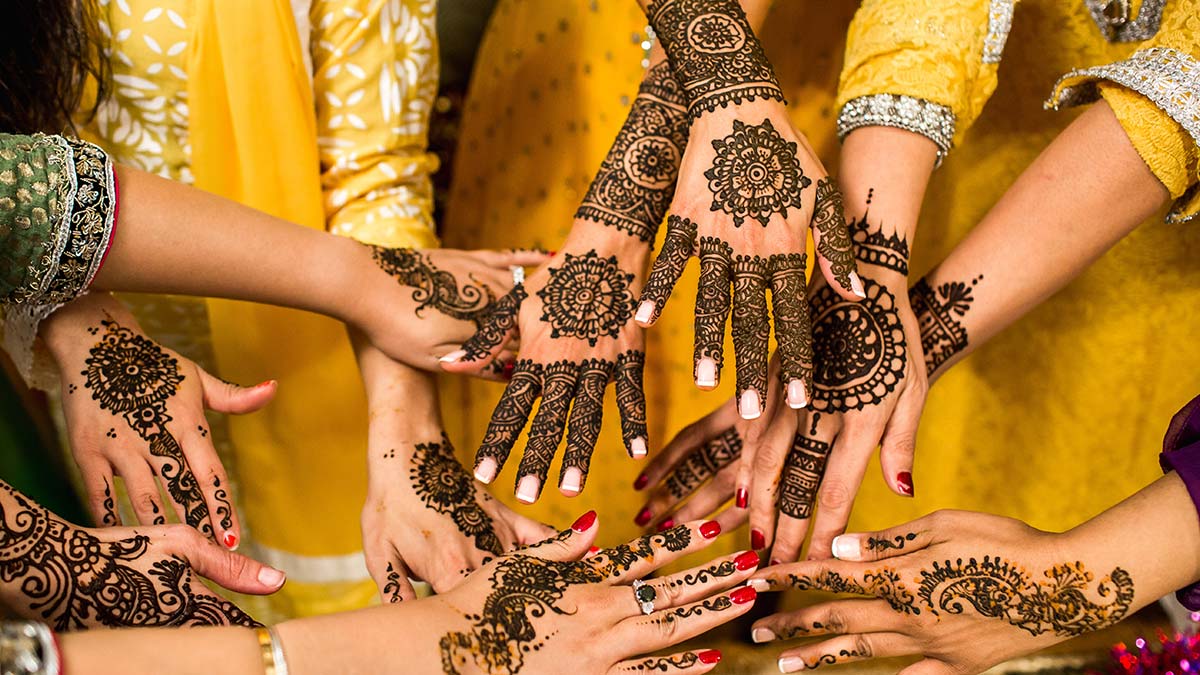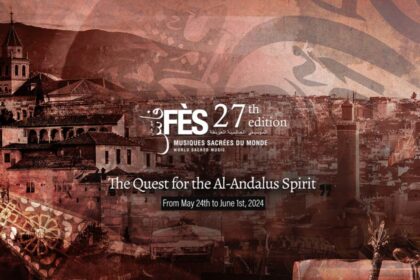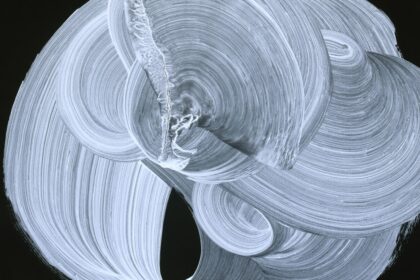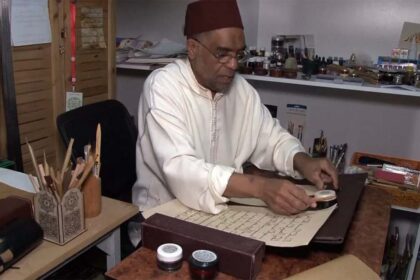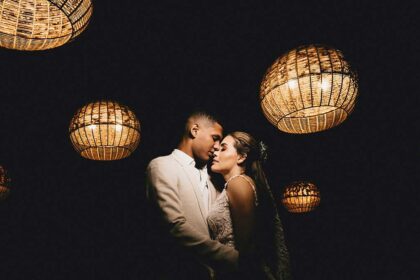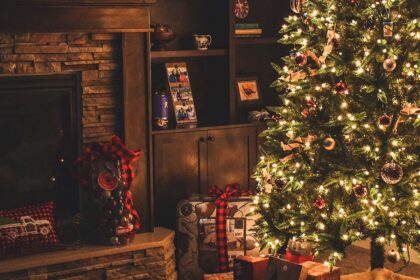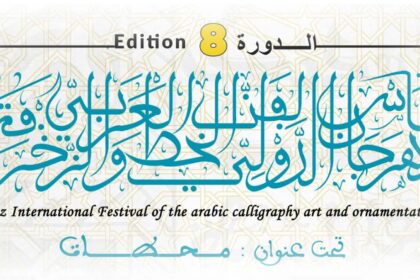Tattooing with henna is considered a traditional and popular method of ornamenting the hands and feet of Moroccan women. Moroccan henna is commonly used for celebrations such as marriages, birthdays and other happy occasions. Its use is eschewed for solemn occasions. As Moroccan traditional customs diversify depending on regions, Moroccan henna designs also differ from one region to another.
What is Henna and what does it contain?
Before using Moroccan Henna in tattooing, it passes through a series of controlled and challenging steps until it becomes a fine powder. Henna is a plant native to North Africa, Asia and North Australia and is grown in the Zagora region of Morocco. It is generally planted in November and in March as it thrives in arid landscapes and requires hot weather but demands regular watering. It will die if temperatures fall below 5 degrees Centigrade. It is a tradition where Moroccan henna is planted, that the landowner prepares a feast as a thank you to the men who have helped him with the planting of the henna seeds.
According to Moroccan traditions and customs, henna is always related to Moroccan women’s beauty more than men’s, though men sometimes use it to dye their beards. Henna is considered part and parcel of Moroccan women’s lives, as it is used in conditioning and dying their hair, nails, hands, and feet.
Henna leaves contain different glycosidic substances, most notably lawsone, also known as hennotannic acid, which is primarily responsible for the biological effects that give a blackish-brown colour to the skin.
How is Moroccan Henna made?
After being harvested and dried, henna leaves are crushed into a dust-like powder. Then, Moroccan henna powder is mixed with a dollop of lemon juice, a pinch of cloves, and hot water until the ingredients become a kneaded paste.
The henna paste is decoratively applied on clean skin, the design depending on the woman’s taste. This paste is left on the skin until it dries. It is important to notice that the longer the henna is left on the skin, the darker the colour will be.
Pro tip: to get fast results and a brownish-black colour from henna, older Moroccan women suggest diluting henna paste with Moroccan tea after it has been tattooed on the skin.
Henna Tools
There is no formal, institutional setting where the art of henna tattooing is taught. It is passed down through generations from mother to daughter. The women responsible for tattooing henna in Morocco are known as “Nakasha“, who have learned the skill from their ancestors
Typically, there are three main tools for ornamenting Moroccan henna:
- Murood; a pen-sized, pointed stick made of wood which was the only tool used in the past. It is dipped in henna paste and used to make thin decorative lines on the skin. However, tattooing with a Murood takes a long time because it needs to be dipped frequently in the henna paste, like a quill pen in ink.
- Syringe; the most used nowadays, the syringe is normally 10ml, filled with henna paste, so it is easier for the Nakasha to draw accurately and swiftly.
- Triangle Plastic Pouch; a plastic pouch that is also utilized today and has started to capture the attention of artists, especially young ones. It is filled with henna paste, and it is cut from the bottom, depending on whether the person wants thin or thick henna lines on the design.
Moroccan Henna Designs
Morocco is a North African country known worldwide for its diverse and harmonious culture. Moroccan regions vary not only in terms of customs, weddings, caftans, or Moroccan food but also in terms of Moroccan henna designs. Numerous Moroccan henna designs have existed for decades, however, let’s choose the most popular ones:
- Amazighi-henna Designs: or Berber-henna designs, are unique to the Tamazight speakers who occupy the High, Middle, and Anti-Atlas Mountains. They are inspired by Amazigh culture, utilising Berber geometric patterns such as Amazigh Fibula (Aketi), Tifinagh script signs, the Amazigh Cross, and the Hand of Fatima (Khemissa).
- Fassi-henna Designs: associated with the Fez and Meknes region. Due to their geographical proximity, both of these Imperial cities have the same henna designs.
- Sahrawi-henna Designs: when we talk about the Sahrawi or the Sahara area, we mean the region starting south of Marrakech and continuing southwards beyond Laayoun and Dakhla ending with Lagouira city. Sahrawi henna designs are inspired by desert landscapes, hence they combine geometric patterns made up of bold lines and desert symbols such as palm trees. They are a brownish colour. Sahrawi henna designs often have a style in which both hands are completely tattooed up to and beyond the wrists.
- Chamali-henna Designs: are found in areas to the north of Morocco including Tangier, Tetouan, Hoceima, etc… Simplicity and elegance are reflected in Chamali henna designs in which thin lines and dots, flowers, and geometric patterns are used decoratively.
Why is Moroccan Henna so important for Moroccans?
“Wherever there is Henna, there is Happiness” is a Moroccan idiom that represents the place of henna in Moroccan society. Thus, Moroccan mothers always urge their daughters to use henna and tattoo their hands as for them it is a symbol of calling upon God’s blessings, “حن يحن عليك مولانا“.
Moroccan henna is not just decorative but also used in treating and curing illness. Moroccan henna is used for headaches and nail problems, beauty as well as for magnetizing joy and banishing sadness.
Moroccan henna in the Henna Night Party.
No joyful Moroccan occasion can be held without Moroccan henna being a welcomed guest. Henna night, or a Henna party or as Moroccans call it “lilat al-henna“, is one of the most common occasions that witnesses the incarnation of Moroccan henna with its atmosphere. The henna night is the bride’s night, in which the bride celebrates her last night of being single. Only women from the bride’s family and the groom’s family are in attendance.
It is forbidden for a bride to tattoo her hands or feet during the period of her wedding until the henna party. On that night, the bride is dressed in a royal-green caftan and adorned with Moroccan gold jewellery with the help of the Nagafa, a woman who is in charge of dressing the bride and doing her makeup.
On a silver plate called “Siniya”, there is a silver ball filled with henna paste, milk, sugar, and eggs which convey blessings and wishes for a happy, pure, and comfortable life for the couple. The bride enters the party hall where women are dancing to Moroccan traditional songs and melodies mixed with the “youyou”, then she is led to a “berzza”, the sofa where the bride and the groom sit, in front of the” Siniya” and the Nakasha who begins tattooing.
The invited women throw coins and banknotes on the “Siniya” as gifts for the bride. The Nakasha continues tattooing the bride in a focused and artistic way to make her look gorgeous. Single women at the henna night are encouraged to tattoo their hands with the bride to share her happiness and to wish for a blessed life with their future partners.
Frequently Asked Questions.
As a tourist, where can you get a Moroccan henna tattoo in Morocco?
- Marrakech: one of the best-known cities for henna tattoos in Morocco. Jemaa El-Fna Square and the old Medina are excellent places for tourists to find many Nakashes, the expert Moroccan women artists who tattoo henna. Nakashes always have a Moroccan henna design book, which includes different henna designs from different regions.
- Casablanca: Bab Marrakech and Mohammed V Square (Pigeon Square) are popular for tattooing Moroccan henna in Casablanca.
- Rabat: the capital of Morocco, It is also a famous place for tattooing Moroccan henna designs. Bab El Had square is a common place for Nakashes offering different Moroccan henna designs.
- Fez: the spiritual capital of Morocco, is one of the most attractive cities in Morocco for tourists. A famous place where tourists can tattoo henna is the Taala’a Kebira, one of the greatest and longest streets in Fez el Bali that starts at the Bab Bou Jloud and Bab Mahrouk gates and ends at Al-Attarine Madrasa near the Qarawiyyin Mosque.
- Tangier: the “Northern Bride” as it is commonly known, is located in the north of Morocco. The Sour el Magaazine Wall is the most visited place by tourists for tattooing Moroccan henna.
- Meknes: an imperial city of Morocco founded by Sultan Mulay Ismail, it’s a historical city par excellence. However, El Hedim Square is the best place where tourists can get a henna tattoo and take pictures in front of Bab Mansur al’Alj gate.
- Agadir: Souk El Had is a place frequented by Nakashas for tattooing and selling Moroccan henna to Moroccan and foreign visitors.
Prices of Tattooing Henna in Morocco?
The prices for henna tattoos vary depending on the city, the required design, the quality of the henna, and the designer. Prices range between 30 and 60 Moroccan Dirhams, roughly equivalent to 3 to 6 US dollars.
Is Moroccan Henna black?
Moroccan henna has a green colour when it’s crushed and mixed and it is transformed to reddish-orange, brownish-red, brown, or brownish-black when it is applied to the skin, depending on how many hours that the henna is kept on the skin. Natural Moroccan henna is not black, the black henna that one hears about is sometimes available but should be avoided as it contains PPD (paraphenylenediamine) and is an oxidative, that can have a serious and hazardous effect on the skin.
To summarise, Moroccan henna is not just a simple product, it is a way of life and part of a time-honoured tradition. A natural botanical mixture used to create meticulous designs using basic tools and with a deep-rooted cultural significance. As a symbol of the country’s history, Moroccan henna not only adorns a woman’s skin but also weaves a vibrant cord connecting past and present, honouring Morocco’s rich heritage in the high-spirited tapestry of henna night parties.







